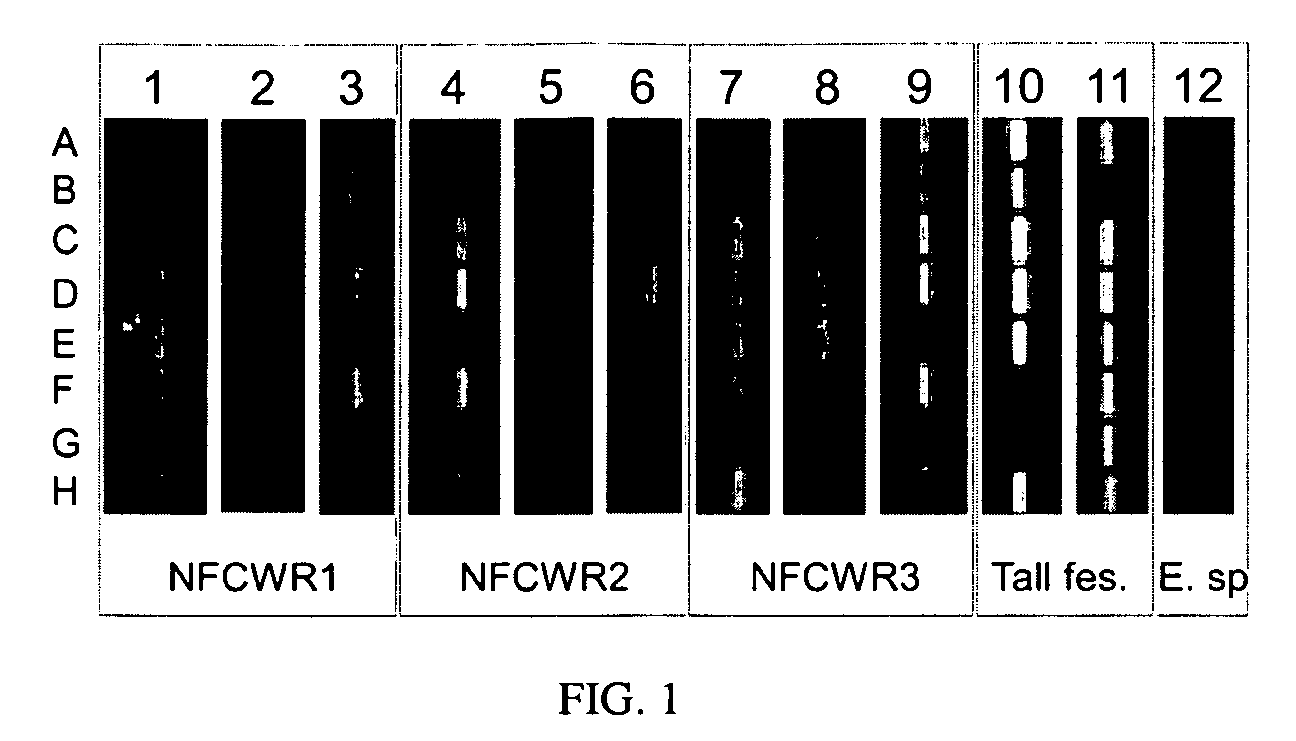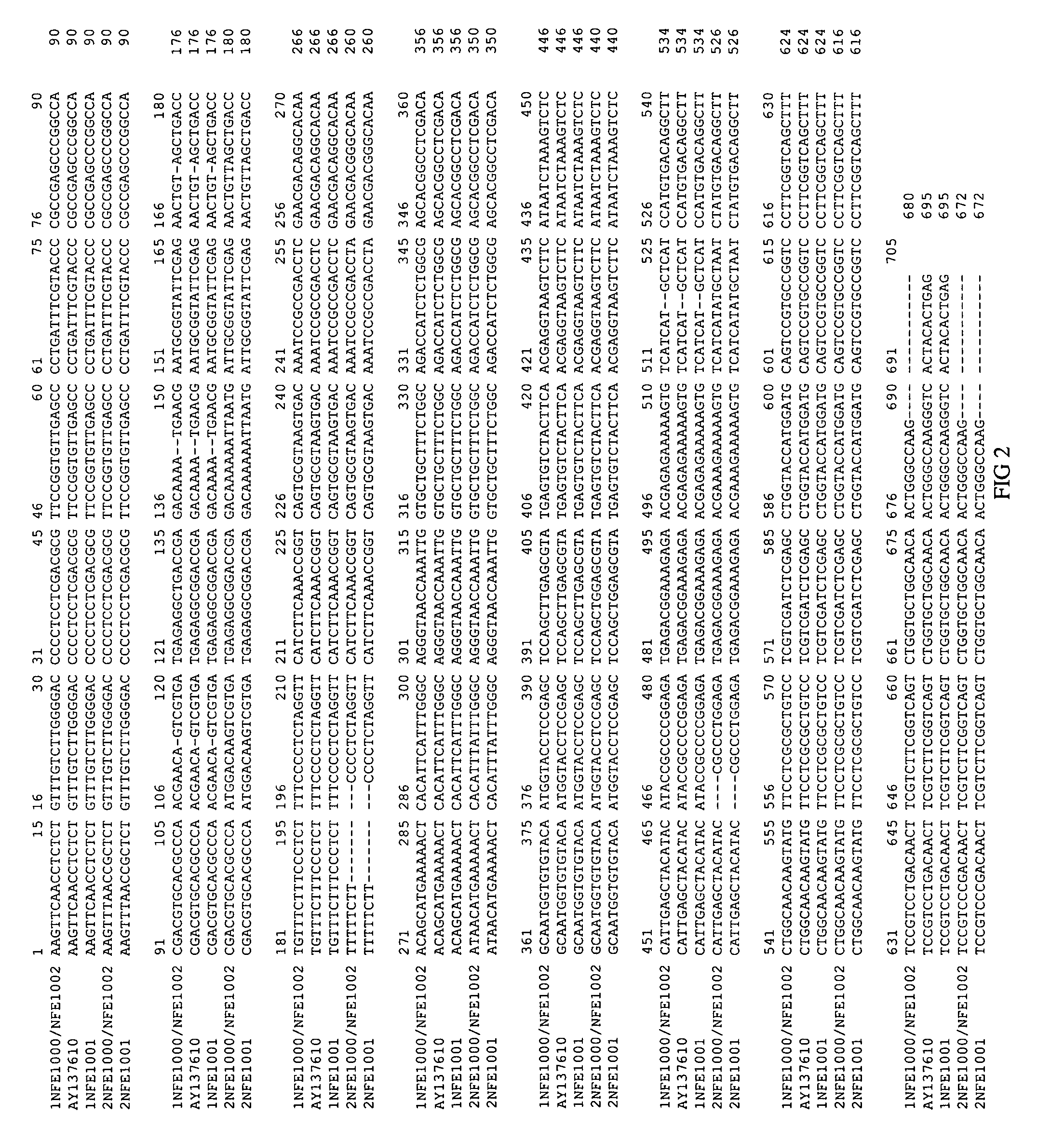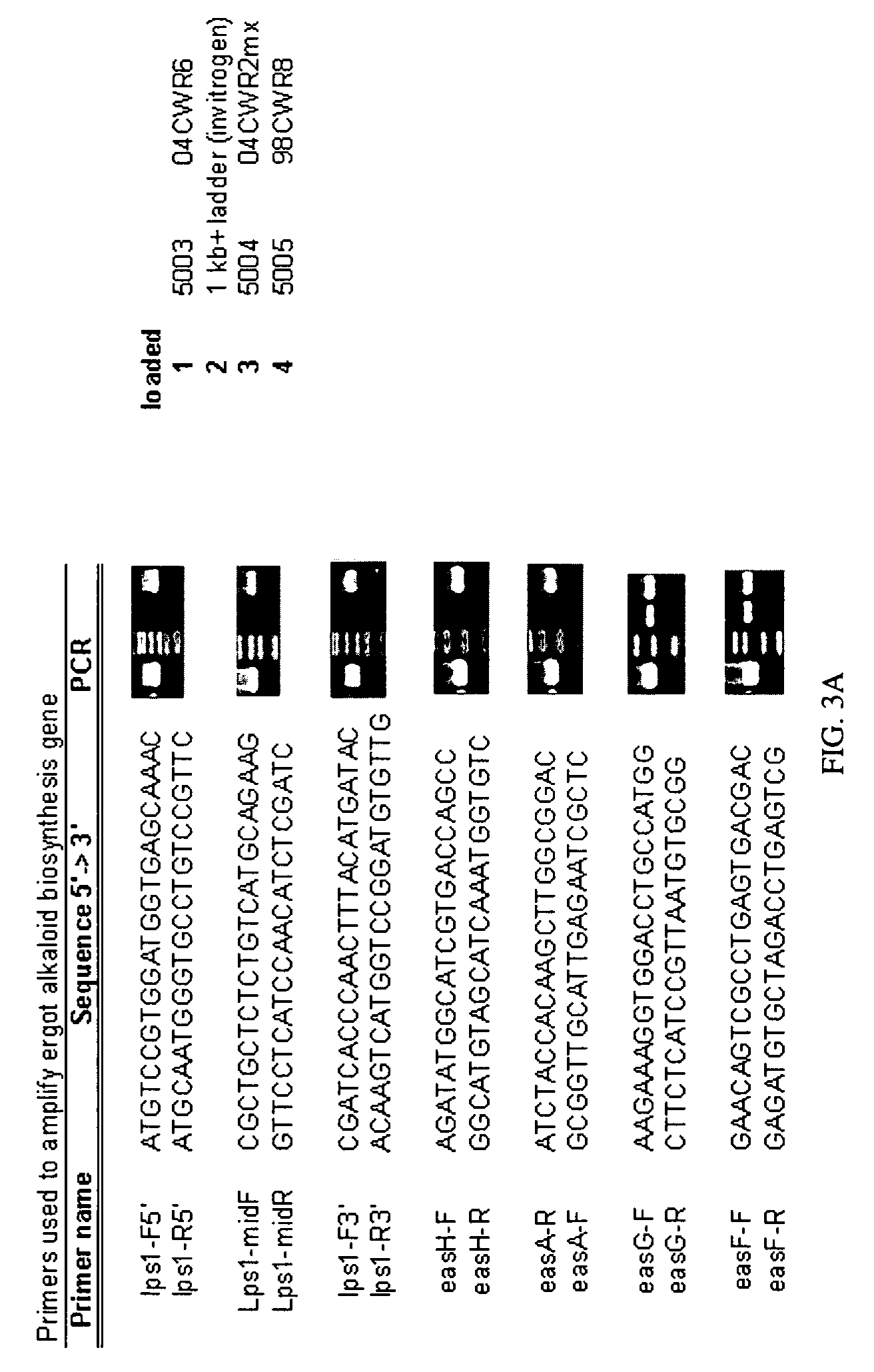Fungal endophytes of Elymus canadensis
a technology of elymus canadensis and endophytes, which is applied in the field of fungal endophytes of host plants, can solve the problems of reducing the agronomic value of a host plant crop, reducing the growth and reproduction reducing the reproductive fitness of the host plant, so as to enhance the growth or reproduction of the elymus canadensis host grass plant, the effect of increasing the number of tillers
- Summary
- Abstract
- Description
- Claims
- Application Information
AI Technical Summary
Benefits of technology
Problems solved by technology
Method used
Image
Examples
example 1
Endophyte Isolation and Culture, Isolation of Fungal DNA, and PCR and Sequence Analysis
A. Endophyte Isolation and Culture
[0034]Three CWR accessions were collected from Texas (NFCWR1 and NFCWR3), and Mexico (NFCWR2). These Elymus accessions were determined to be endophyte-infected but stroma did not form during cultivation. Two additional CWR accessions from Oklahoma, also infected by Epichloë elymi, were included in the comparison. The additional Epichloë elymi isolates from these accessions were capable of producing stroma on host plant tissues. Fungal isolates (Table 1) were isolated directly from endophyte-infected pseudostems (Moon et al., 2002). Cultures were maintained on Potato dextrose (PD) agar at 22° C.
[0035]Seventy two plants from three NFCWR accessions were screened for endophyte infection. Since the narrow stems of the CWR plants were not suitable for analysis with an endophyte specific immunoblot, the plants were screened for endophyte infection using aniline blue stai...
example 2
Phylogenetic Analysis
[0045]Phylogenetic analysis was performed as per Craven et al., 2001 using maximum parsimony that utilized the branch and bound search in PAUP (Swofford, 1998). PCR and sequence analysis of amplified endophyte DNA fragments of strains NFE1000-NFE1002 (SEQ ID NOs:17-19, respectively) corresponding to the ITS region (GenBank accession DQ899096; SEQ ID NO:1) combined with phylogenetic analysis revealed that the NFE isolates were more similar to E. amarillans than E. elymi. While the ITS sequence analysis was informative, only one progenitor copy is maintained after interspecific hybridization (Ganley & Scott, 2002) and therefore ITS phylogenetic analysis was used in combination with additional analysis. Thus, additionally, amplified tub2 and tef1 PCR bands from the NFE isolates (e.g. Example 1) were cloned into pGEM-T-easy® to sequence individual fragments. Analysis of the tub2 and tef1 sequences from the NFE isolates demonstrated that two distinct copies were pres...
example 3
Ergot Alkaloid Analysis
[0048]The presence of ergot alkaloids in endophyte-infected plant material was analyzed using the Phytoscreen® PT ergot alkaloid kit (Agrinostics, Watkinsville, Ga.), which detects the ergoline ring moiety common to ergot alkaloids by a competitive based ELISA. Ergovaline as well as biosynthetic intermediates may be detected by this ELISA assay. Freeze dried plant material (100 mg) was extracted and mixed gently for 3 hr. The extract was allowed to settle overnight at 4° C., and a 1 mL sample was removed and centrifuged at 8000 rpm for 3 min. A 50 μL aliquot was assayed for ergot alkaloids according to the manufacturer's instructions.
[0049]Two endophyte-infected plants from each NFE group were tested. The analysis of the CWR plants showed that the ergot alkaloid levels of five plants were very low, ranging from 1.4-66 ppb (close to the lowest level of detection), but with one plant showing a level of 477 ppb, a level similar to that of Kentucky 31 endophyte-in...
PUM
| Property | Measurement | Unit |
|---|---|---|
| reaction volumes | aaaaa | aaaaa |
| reaction volumes | aaaaa | aaaaa |
| freezing temperatures | aaaaa | aaaaa |
Abstract
Description
Claims
Application Information
 Login to View More
Login to View More - R&D
- Intellectual Property
- Life Sciences
- Materials
- Tech Scout
- Unparalleled Data Quality
- Higher Quality Content
- 60% Fewer Hallucinations
Browse by: Latest US Patents, China's latest patents, Technical Efficacy Thesaurus, Application Domain, Technology Topic, Popular Technical Reports.
© 2025 PatSnap. All rights reserved.Legal|Privacy policy|Modern Slavery Act Transparency Statement|Sitemap|About US| Contact US: help@patsnap.com



